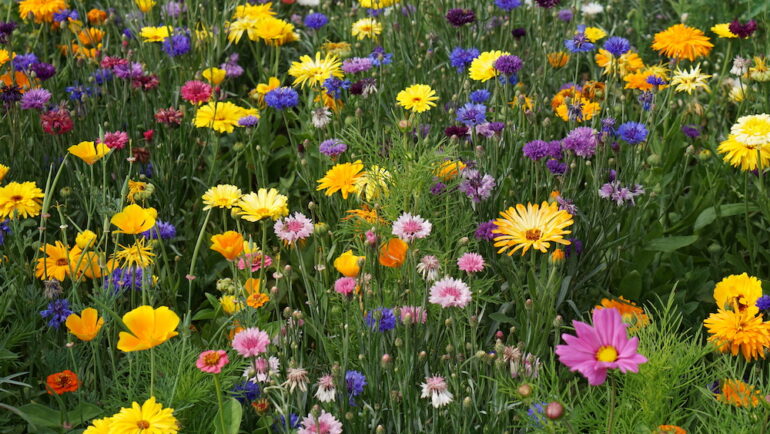All gardens are beautiful, but a meadow garden provides additional benefits. These gardens help support wildlife and are easier to maintain than lawns or other gardens. Here’s what you need to know about converting all or part of your yard to a meadow garden.
Meadow garden basics
Meadow gardens feature native plants. That means they provide a habitat for pollinators such as bees, butterflies, other insects, and other local wildlife. Meadow gardens require no fertilizers or harmful chemicals and little mowing. And once established, they rarely need water.
While meadow gardens require less labor than a traditional garden, they do require some maintenance. And they can be challenging to start.
How to plant a meadow garden
- Before you begin preparing your site, check your homeowners’ association rules and local ordinances to make sure meadow gardens are allowed in your area.
- Select an area with full sun – at least six hours a day.
- While meadow gardens are informal, they do require some planning. Be sure to research native plants before buying so your garden provides a habitat for wildlife and flourishes in local growing conditions. Measure your space carefully so that you buy enough plants to fill it. At least 50 percent of your plants should be grasses. Your garden should be mostly perennials, but you can add annuals here and there.
- Begin site preparations by removing all weeds. The best method is to cover your selected area with plastic for several months.
- Plant in late spring or early fall.
- Space plants less than a foot apart. This will make for a lusher garden and will help keep down weeds. You can establish your meadow garden more quickly using plants in containers rather than seeds.
- Arrange your plants in waves of clumps of the same grass or flower. For example, plant six to eight purple coneflowers together and repeat the clump in several spots throughout the garden. Avoid straight lines.
- Use small, medium and tall plants and arrange them in layers, with the shortest in front and the tallest in back.
- Include pathways of stones or pavers. You can also plant your pathways with grass but must mow them several times a summer.
- Add interesting features such as a bench, boulders, a water feature, or a sculpture.
- While established meadow gardens rarely need water, you should water deeply several times in the weeks after planting.
- Leave the plants over the winter to provide food and shelter for wildlife. Mow the plants to about two inches in late winter or early spring. This is necessary to eliminate shrubs or trees that may have begun to grow.
Related – Gardening With Native Plants


